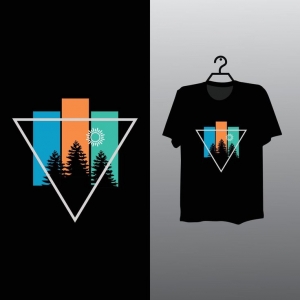When it comes to mechanical springs, tension springs and torsion springs are two of the most commonly used types, each playing a crucial role in various applications. Though they share some similarities, they function in distinctly different ways. Understanding their differences, uses, and construction is key for engineers and designers to select the right spring for a specific project. This article will explore the primary differences between tension springs and torsion springs, including their applications, design, and advantages.
1. Function and Design
Tension Springs:
Tension springs are designed to resist pulling forces and are often referred to as "extension springs." They work by being stretched under an external force and are designed to return to their original position once the force is removed.
They are typically wound in a helix shape, with coils that are closely spaced together. The tension spring is attached at both ends, and when force is applied, the spring stretches, generating a restoring force that tries to return the spring to its original length.
The more the spring is stretched, the greater the force it exerts to return to its original length.

Torsion Springs:
Torsion springs, on the other hand, are designed to resist twisting or rotational forces. They are wound in a spiral or helical shape, but the coils are designed to twist rather than stretch.
A torsion spring works by rotating around its axis, applying a force that resists the rotational movement. As the spring twists, it creates torque that works against the applied force and attempts to return the spring to its resting position.
Unlike tension springs, torsion springs generally work in applications that involve angular movement rather than linear motion.
2. Applications
Tension Springs:
Clothing lines: Often used in retractable clotheslines, where the spring allows the line to extend and retract smoothly.
Garage doors: Tension springs are a key component of garage door mechanisms, where they store energy to lift and lower the door.
Trampolines: These springs provide the tension needed for the bounce by resisting stretching forces.
Automotive systems: Used in various suspension and mechanical components to store energy.
Torsion Springs:
Clamps and jacks: Torsion springs are frequently used in clamps and jacks, where rotational force is necessary to apply pressure or hold things in place.
Lid mechanisms: Found in applications such as the lid of a toy box or the rear hatch of a car, torsion springs assist in smoothly opening and closing.
Cameras and other rotating devices: Used in cameras for rotating lenses or in devices with internal rotating parts.
Garage doors: Torsion springs are a critical component of torsion-based garage door systems, where they are mounted above the door to provide the torque needed to lift and lower it.
3. Key Differences in Performance
Tension Springs:
Tension springs primarily operate by being pulled and are designed to return to their original length when the pulling force is released.
The force they provide is proportional to the amount they are stretched. They tend to have greater linear displacement and less rotational energy.
Torsion Springs:
Torsion springs operate by being twisted and store energy in the form of rotational force, known as torque.
The force they provide is proportional to the amount they are twisted, and the displacement is rotational, not linear. Torsion springs are used where rotational motion or torque is needed, and their movement is typically confined to a limited angle.

4. Material and Construction
Both tension and torsion springs can be made from a variety of metals, such as carbon steel, stainless steel, and alloy steel. The choice of material depends on the application's environment (e.g., exposure to moisture, temperature extremes, or corrosive substances). Both types of springs are typically custom-made to fit specific force, displacement, and size requirements.
Tension Springs:
Typically feature a hook or loop at both ends for attachment to other components.
The hooks or loops are designed to withstand the high-stress forces applied during stretching.
Torsion Springs:
Usually feature ends that can be bent into a variety of shapes to allow for rotational movement. The ends may have arms that rotate in opposite directions to provide the necessary torque.
5. Advantages and Disadvantages
Advantages of Tension Springs:
Simple design and easy to implement.
Efficient in absorbing and releasing linear forces.
Commonly used in high-stress situations where a substantial pulling force is required.
Disadvantages of Tension Springs:
Limited to applications where pulling forces are involved.
Can be vulnerable to overstretching if the material or design isn’t adequate for the expected forces.
Advantages of Torsion Springs:
Excellent for applications requiring rotational or angular movement.
Can generate a substantial amount of torque in a compact form.
Offers a high degree of flexibility in design, allowing for custom configurations for specific rotational forces.

Disadvantages of Torsion Springs:
More complex design compared to tension springs.
Requires precise calculations to ensure the spring can handle the applied torque without failure.
Summary
While tension springs and torsion springs are both essential mechanical components used to store and release energy, they operate in fundamentally different ways. Tension springs are ideal for applications that require the storage and release of linear forces, while torsion springs excel in applications that involve rotational movement. Choosing between the two depends on the nature of the applied forces and the specific requirements of the system.
By understanding the basic differences in function, design, and application, engineers can make informed decisions when selecting the appropriate spring type for their needs, ensuring optimal performance and longevity in their designs.







